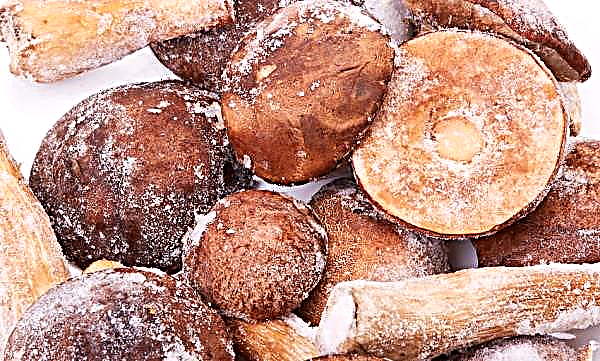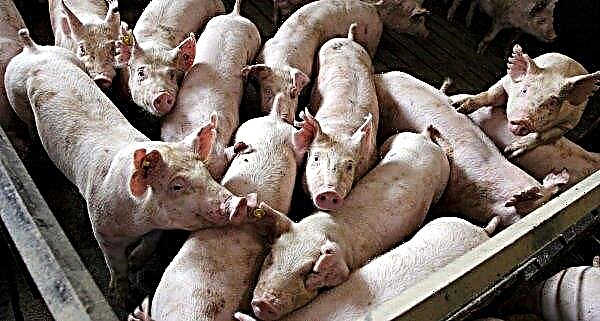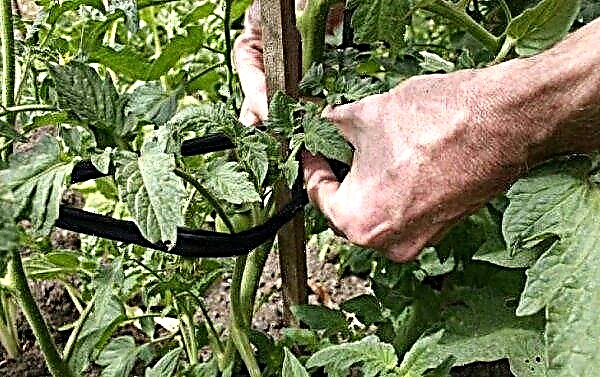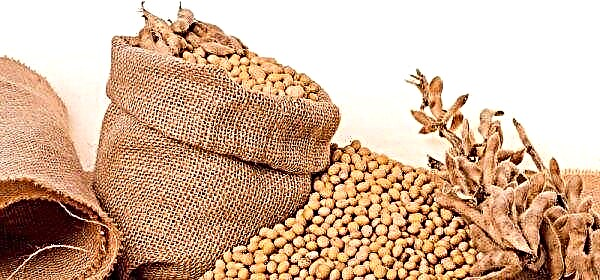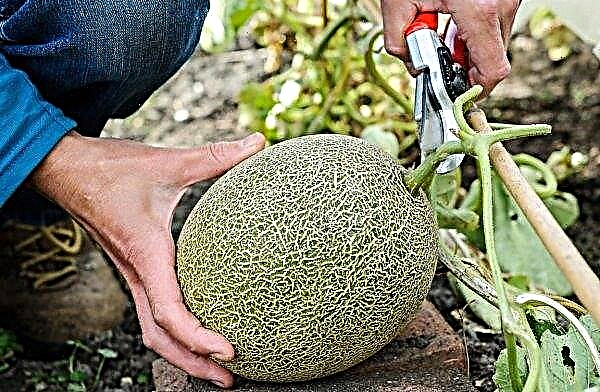Beekeepers have long been dealing with the problems of intensification, that is, increasing the amount of honey by improving the technology for keeping bees. One of the most advanced in this matter was Mikhail Ivanovich Milenin from Crimea. In the article, we analyze his method in more detail.
Year-round cycle of keeping bees according to the method of Milenin M. I.
The intensive method of keeping bees is based on the theses that the famous beekeeper presented in his lecture “The year-round cycle of keeping bee colonies using an intra-frame isolator according to the method of M. Milenin”:
- Depending on the load of royal jelly on the larvae, their lifespan will vary significantly.
- The fact that bees wear out during the collection of honey does not significantly affect their lifespan.
- If you feed the larvae with honey and pollen, the insects will be healthier.

- The time that bees live will depend on many factors that affect all stages of the insect's life cycle, starting from the egg. It can both increase and decrease under the influence of these factors.
- Bees that have accumulated more body fat before hibernation begin to have better health.
- If the fatty body degenerates, it shortens the life span of insects. Degeneration may increase under the influence of pests and diseases.
- Bees that give milk after reaching 20 days of age live longer. At this age, they become more mature. It should be noted that with age, the amount of milk decreases, and after 40 days it can disappear altogether.

- If the bees hibernate without brood, their fatty body degenerates more slowly.
- Bees can become centenarians if they appeared in late summer or early fall.
- If you interrupt inoculation with the uterus, as before swarming, then you can positively affect the life span of one group of bees, while not reducing it for another group.
- If at the beginning of their lives, bees consume enough high-quality protein, the fat body develops better. It also develops faster if there is no brood in the family and not too many drones.
- Bees live longer in families where there is no young open brood, few drones and enough pollen.
- If brood is limited, and the family is replenished in an insignificant amount with printed brood or young insects, then bees that live longer than others appear in the hive.

- Some bees are able to destroy or limit young open brood - in this case they acquire the ability to live longer by inheritance.
- If there is no brood in the family, then the glands and the fat body develop in the best way, which increases the quantitative and qualitative characteristics of honey.
- Bees that live up to 8 months and longer can fly further and bring more bribes.
- The productivity of flying bees can indirectly judge the duration of their life.
- The efforts that the bee spends on the offspring for several days are equivalent to the efforts to collect a bribe for several months.
Studying publications on beekeeping by L.N. Tolstoy, V. Starobogatov, A.M. Butlerov, and also introducing their experience in his own apiary, M. Milenin came to the conclusion that multimodal hives with brood restriction and amplification with the help of printed brood give honey many times more.
Important! Long-lived bees are able to bring at least twice as much nectarthan the rest.
During the year, the maintenance of bees occurs as follows:
- During the flowering of acacia (May 15–27), the first isolation of bees occurs. The old uterus during the first bribe is sent to the upper body, the young uterus is planted in a separate nest under the cap.
- Further, 2 uterus (30–35 days) are involved in brood extension.
- When 2 tricks begin, families are isolated for 25 days. After 18 days from the beginning of this period, both uterus are placed in the upper case, and a young uterus is settled on the vacated space.
- At the end of the honey collection, the bees are processed from the Varroa tick.
- After 3 days, the uterus is released. In this case, the bees should be in isolated cases.
- Within 40 days (until September 10), the family builds up. In this case, it is necessary to provide supportive bribes or top dressing, otherwise there will be a shortage of nurses, which negatively affects the stimulation of oviposition. This is the period when long-lived bees are born.
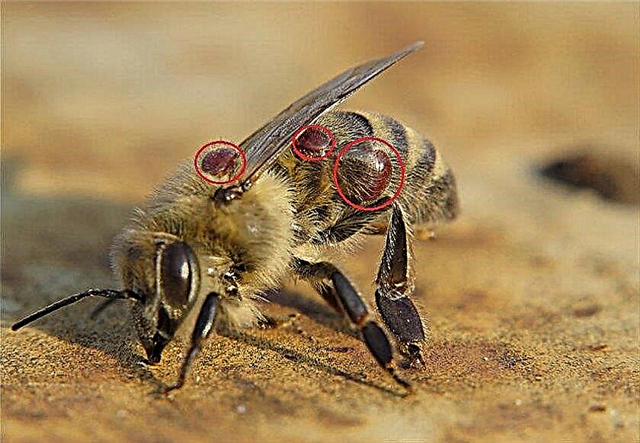
If the families are weak, then for the winter they refuse to isolate them or isolate them through the feed frame.
Advantages of the In-Frame Insulator
- The presence of an intra-frame insulator M. Milenina makes it possible:
- embed it inside the honeycomb without violating the integrity of the wire from which the framework is made;
- influence the process of labor generation in the hive;
- the uterus does not need to be removed from the family, so there are no problems when she returns;
- being in contact with the rest of the family, although in the isolator, the uterus distributes a special substance, due to which the number of drones is controlled;
- less time is spent on caring for the hive;
- all insects collect honey without being distracted by caring for offspring;
- royal jelly in bees begins to be secreted later, which increases their lifespan;
- due to the lack of brood, ticks do not have the ability to reproduce;
- beekeeping becomes profitable from 1 year;
- the profitability of beekeeping is increasing.
Did you know? In one medium-sized nest there can be about 50 thousand bees weighing up to 8 kg. At the same time, each of the working bees flies out of the nest about 10 thousand times in 1 day, visiting up to 7 thousand flowers and replenishing pollen reserves by 200 mg.
Multimodal hive
Multimodal hive - This is a hive of a special design in which families can be separated with the help of partitions. For multimodal content of bees, they are transferred in the following ways:
- plant a new uterus in a 1-uterine family;
- plant a spare uterus before wintering;
- 2 families from 1 hive unite.
This process occurs during such periods:
- when swarming;
- before wintering;
- when it is time to destroy other queens suitable for egg laying.

Dual-uterine
In a two-uterine hive, families can develop as follows:
- For the winter, families go to extreme sections, the beekeeper can equip the store. The summer section is cleaned.
- In case of early honey collection, a store extension is installed.
- If in the extreme sections the bees feel good, then you can divide the middle section with a perforated partition or separation grid and move the families there.
- Instead of a partition, a frame impregnated with drops of mint is installed. Of 2 families, 1 is a two-uterine one.
- If desired, you can take 1 frame from the middle section into a new 10-frame building, where the building frame will be equipped. Thus, the family expands, the nest, honeycombs, brood are updated.
- If you discover the beginning of swarming, you can use the method of layering in the 8-frame building. The cells are sealed, the extreme openings are closed, the middle ones are opened. It unites the family.
- After protection against swarming at the honey collection, it is necessary to ensure that free honeycombs are available for the nectar, and select sealed honey. When installing the second stores in the hive should be about 30 frames. So that aggressive bees after the end of the main bribe do not destroy the uterus, the middle letok closes, and the last opens.
- When the honey collection is over, the second building or store is removed, the families are separated by partitions. If the store remains, take 6 frames from the frames and return at the beginning of winter.
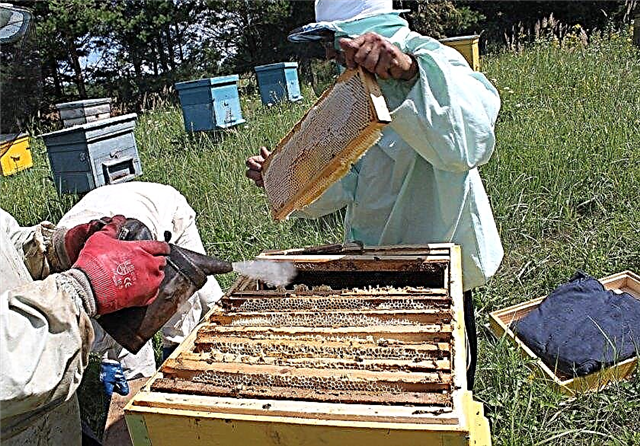
The design of the hives can be different:
- Only flightless bees contact. For this, a store is installed above the brood housing, preferably a detachable one.
- A shop and a 3-frame compartment are equipped, which is separated from the brood housing with the help of a lattice window, which is equipped with gate valves made of textolite. Subsequently, this compartment is converted into an intra-syrup feeder for syrup. This provides the same odor in both cases and reduces the possibility of aggressive behavior of bees.
- The bees contact each other through a common wide entrance of 40 cm in size, which is equipped in an additional front or rear compartment.
- Between sections with brood you need to make a general separation.
- Under the brood buildings, the common part is equipped - when the swarm begins, the body is divided into 2 parts with a blank partition with a trellised bottom. All compartments should have grooves, the height of the lower part should be such that the cassettes with frames fit. A frame with mature queen cells is also required.
Important! A partition is needed so that the uterus does not communicate with each other, which can lead to a struggle between them.
A drawing of a hive for a two-uterine insect content may look like this:
- Lower body.
- The third building.
- The second building, divided in half.
- Extension
- Roof.
- Catcher stand.
- Bars in the shape of skis.
- Lateral letok.
- Lower letok.
- Upper letok.
- Upholstery trims.
- Partition.
- Lower arrival board.
- The upper arrival board.

Total size - 68.5 × 52 cm. For manufacturing, you need a board 3.5 cm thick. Each of the 2 compartments consists of 8 frames, the distance between which is 37.5 mm.
Three-uterine
With 3-uterine maintenance, families are formed as follows:
- After the winter, 2 branches are formed, which contain like a two-hive hive.
- Bends are combined before the main bribe.
- Before wintering, the family and previously combined branches are united.
It contributes to the formation of strong families.where the bees live longer and the range of the insects is higher. Thus, the amount of honey increases in an intensive way.
Did you know? One thousand larvae require 100 g of honey, and for a year the bees consume about 30 kg of honey.
Multi hive cassette
The cassette content of the bees provides for the creation of compartments for multi-mother insects, in which cassettes of 8 frames are mounted on the slats. In such compartments, bee nests are kept with the possibility of transition from compartment to compartment. This allows you to strengthen weaker families, warm them. A prerequisite is the presence of additional ventilation holes in the rear wall, closing roof windows, opening doors on cassettes.
A prerequisite is the presence of additional ventilation holes in the rear wall, closing roof windows, opening doors on cassettes.
This provides access to fresh air, does not make it possible to catch a bee, but allows you to assess their condition in winter. For oviposition, the uterus is left no more than 1/2 of the frame, the honey and nest parts are separated by grids. As a result, the busy bees have no time to swarm.
Mobile Pavilion
A pavilion is a wooden structure that can house 30–40 families. It can consist of 2 parts:
- The working area is for keeping hives.
- Household area - for the maintenance of tools and equipment.

Pavilion content allows you to:
- save space;
- reduce labor costs;
- maintain optimal temperature;
- work in all weather conditions;
- facilitate the strengthening of weak families;
- reduce transportation costs;
- facilitate the maintenance of hives;
- leave insects for the winter in the pavilion.
Did you know? With honey dthe ancient Romans and Greeks canned meat, and the ancient Egyptians embalmed the dead.
Wintering of queens in the isolators of Khmara and Milenina
In vivo, nature has provided breeding restrictions for bees: no one takes away honey from them, due to its large amount of space for the larvae it is very small, therefore the uterus does not postpone them in large quantities. In the apiary, beekeepers pump out honey, thereby freeing up space and stimulating the uterus to oviposition. Bees that appear during the wintering period will be weak, working bees will also weaken, spending energy on feeding, more food will be consumed during the winter. However, removing the uterus from the hive will not give a result, because without the uterine substance, insects will begin to build queen cells and lay eggs with drones. For the same reason, and also because of the high risk of uterine death, the Titov cell is not suitable. The way out of the situation can be insulators.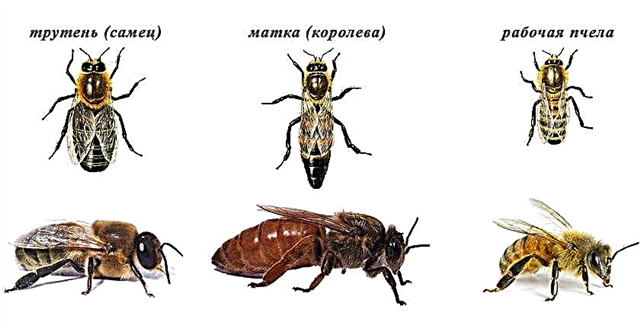
The insulator of Peter Yakovlevich Khmara is used to control the reproductive process in bees, to prevent swarming, to treat them for Varroa tick or other diseases. Apply it without frames in all types and sizes of hives. In appearance, this insulator is a box 36 cm high, 24 cm wide and 1 cm thick, the material of its manufacture is transparent polypropylene. The lattice walls have openings with a height of 0.4 cm and a width of 2 cm. There are also round openings with a diameter of 1.4 cm to launch and release the uterus. Spacers are installed inside the insulator, which do not allow to be reduced in thickness.
The uterus is placed in an insulator in the fall and is not released until spring. This allows you to stop the redness of the uterus and eliminates the need for insects to feed early brood. Through the hole, the bees come into contact with the uterus, feed it, receive the uterine substance, so they do not feel the need to build fistulous queen cells or lay eggs, from which drones are made. Since the insulator is divided into 2 parts, with its help you can use the two-uterine method of keeping bees - insects get used to the smell of both queens, and their aggression disappears.
Remaining in isolation all winter, the uterus stops the reddening, as there are no honeycombs, insects do not spend food and their own energy on young animals. In this case, acacia spring honey will not be used for fattening.
According to P. Ya. Khmara, if you isolate the uterus from mid-August to March - April, then the period of absence of brood will be longer than the life of the Varroa tick, which multiplies with their help, so varroatosis will be defeated.
The uterus is wintering well, as it has the ability to be in the center of the club and receive heat, as well as move vertically with the club.
The insulator M. Milenina is a plastic box with dimensions of 23 × 3 × 3 cm. It can be kept in the nest without being removed: after the uterus is released on the extreme stern frame, during isolation, in the center of the family, where insects begin to gather for wintering.
The uterus can be caught using a cage. To release it with the onset of spring, you need to open the outlet window.
Important! In families where the number of bees does not reach 5 frames, it is impossible to isolate the uterus, since it can die from cold and hunger.
Spring Hive Heater
Some beekeepers prefer to heat the hives in the spring so that the bees get stronger for the first bribe, start to breed and go out to acacia or raspberries with an increased number of insects. However, its use can cause a number of negative consequences:
- If the heating is too strong, there will be a big temperature difference inside the hive and on the street, which will lead to the death of insects.
- If the hives are heated before the snow has melted, the bees will start to fly out and die from hypothermia.
- The emergence of young animals can stimulate swarming.

Roughly warm the hives begin in March - after the snow has melted. There is a special 12-hive heater for sale with a size of 15.4 × 21.6 cm or for 20 W of a size of 21.6 × 30.3 cm. It works from a 12-volt network. However, M. Milenin developed his own version of a heater from improvised materials. To do this, he cut off the neck and bottom of 24 plastic bottles, then pressed them to a flat state.In each resulting rectangle, he made holes and stretched out a zigzag wire from nichrome (1.5 m for each element, a total of 36 m). The total power as a result was obtained per 100 W, or 4.16 W per 1 hive, the required mains voltage is 220 V.
So that in the process of using parts of the zigzag elements of the wire that they do not begin to contact each other and do not cause a short circuit, the beekeeper laid the electrical tape 1 turn across the zigzag. On the outside, to prevent heat loss, the rectangles are protected by pieces of foil insulation. Milenin uses such a heater on the hives in the pavilion.Important! It is believed that up to 1.5 watts of power is required to heat the space between 2 cells of the hive, which is outdoors.
Video: spring warmer of the Milenin hive
Bee Feeding Bowl
M. Milenin developed a model of a drinking bowl for bees from food polypropylene, which can be installed in a frame (2 drinkers per 1 frame), as well as outside. She has special hangers for hanging and protrusions for mounting from the outside of the hive. With a volume of 750 ml, the model has 20.5 cm in length, 15 cm in height and 3 cm in thickness and fits perfectly into the dimensions of the hive-lounger Dadan and Ruta. Inside there is a removable partition, which does not reach the bottom and separates the water intake from the water inlet.
You can pour milk, plain or salted water, medicines or auxiliary preparations into the drinker, and also use it to feed insects. Milenin recommends installing a raft for bees from improvised materials (pieces of a reed stem, dried zabrus, wood chips, etc.) so that insects do not drown while drinking. A drinker inside the hive is especially needed in the cool season, when the water outside can be too cold. Outside, it is installed under the tap hole and a lid with a hole on the side of the tap hole for bees and a cork on the filler part are fitted from a piece of wood to protect the liquid from debris.
The presence of drinking bowls gives beekeepers the ability to control the quality of water that insects drink, and protects the latter from water poisoning from sources contaminated with chemicals, effluents from enterprises, heavy metals. Since drinking bowls are installed individually for each family (3 pcs.), Insects are not able to infect other families through a common drinker with fungal diseases. This factor makes it possible to add drugs to a particular family to drinkers.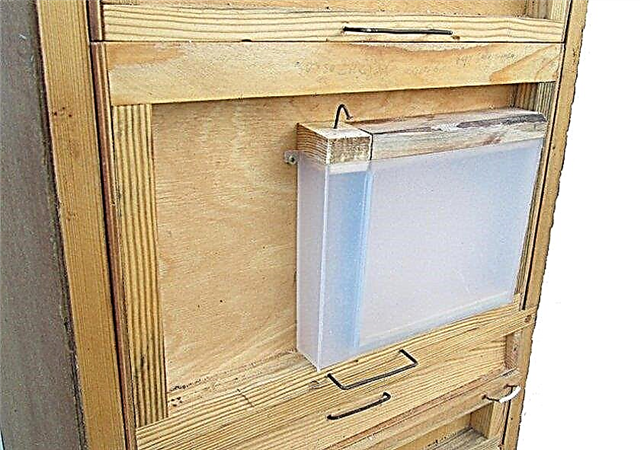
Based on the foregoing, it can be noted that among beekeepers there are many innovators offering new methods of management, one of the most famous is M. Milenin. He not only improved the design of beehives, focusing on multi-content, but also developed his own models of drinkers and a heater for beehives. And his idea of an intra-frame insulator for uterus and the technology of isolation of the uterus can not be compared with in terms of increasing the amount of honey.




